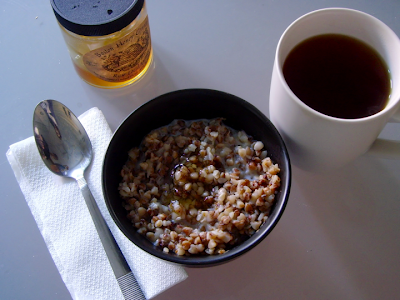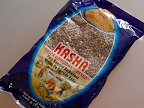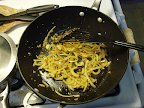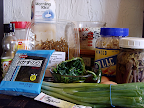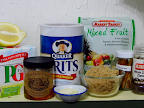Background
We had lots of good resources for Ukrainian cuisine. The first source was a friend who grew up in the Ukraine (and also introduced the two of us). She recommended buckwheat kasha porridge and a blintz as very traditional.
With our meal set up, I went looking for recipes. Ukrainian cookbooks were very easy to find. We got Please to the Table, which we used for Russia. It had no recipe for kasha porridge. Next we checked out The Best of Ukrainian Cuisine and also found no porridge recipe. The next book I found was Ukrainian Cuisine and this one was very interesting. First it was from Julia Child's cookbook collection which is pretty cool. The book itself was written in the USSR in the 1970s and translated a couple of years later. I am not sure if it is the translation or the actual tone of the book but this was easily the most authoritarian cookbook I have ever read. It spent a great deal of time focusing on how to space your meal throughout the day, declaring how many canned products are more readily available than in the past and frequently citing the works of Pavlov on appetite stimulation. Here are some quotes from the book: “regular meals at fixed times establish a proper pattern of reflexes” and “to arouse the appetite and ensure that meal are thoroughly enjoyed the important thing is eating at regular hours.” This book contained no kasha porridge recipes either, but it had lots of uses for tripe and lungs if you are looking for recipes.
Please to the Table provides some wonderful context about the importance of kasha in eastern Europe. Six hundred years ago kasha simply meant feast. It has a place in rituals such as funerals and weddings. The book also lists many different expressions involving kasha such as “he's got kasha in his head” (he's mixed up) and “you can't make kasha with him” (you will get nowhere with him).
We bought our kasha from the Russian Village market, which according to the internet is actually owned by a Ukrainian. The brand pictured has English directions on the packet, which we followed—the recipe apparently too simple to merit inclusion in cookbooks. We also had a very nice Russian tea blend from the same shop.
Basic Kasha Porridge
- Combine all ingredients in a sauce pan and bring to a boil.
- Simmer for 15 to 20 minutes, stirring occasionally, adding add more water if needed.
- Serve with milk and sweetener in amounts of your preference.
Results and Discussion
This breakfast was very simple in every sense. The dish that it seems most appropriate to compare this one to is oatmeal (actually I think it's more like Wheatena –Kitty). The roasted seeds give a subtle smokey flavor. The kasha also feels much more substantive as you chew it and it gives resistance to your bite than oatmeal.
